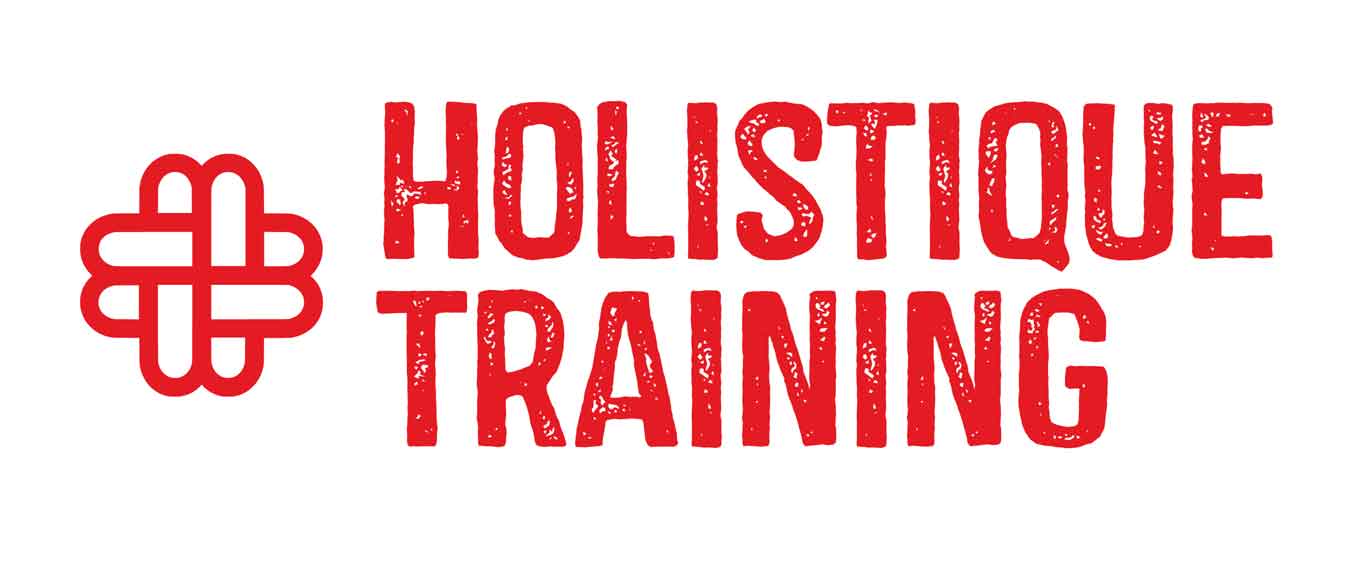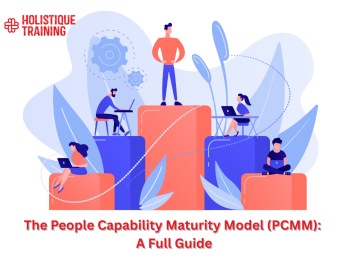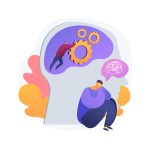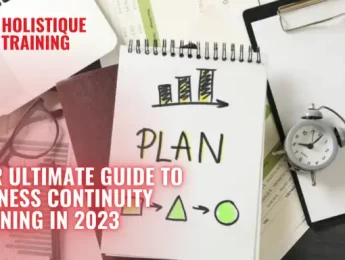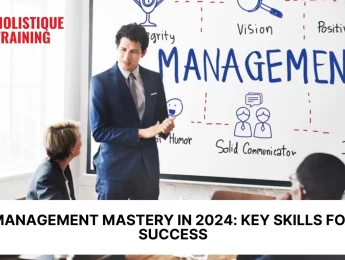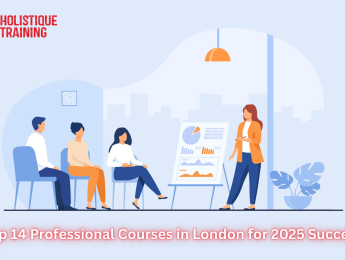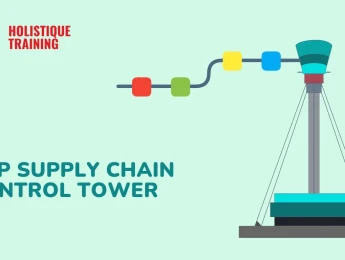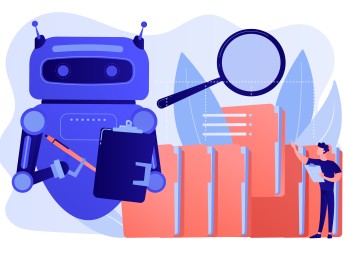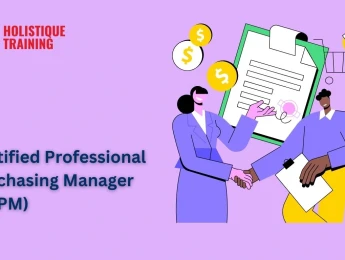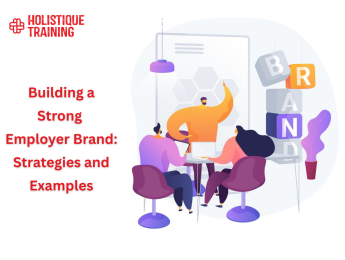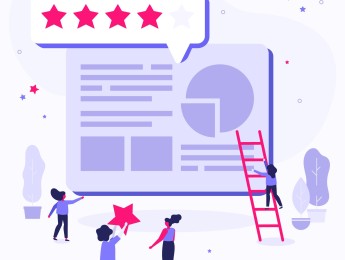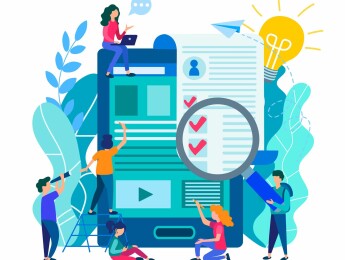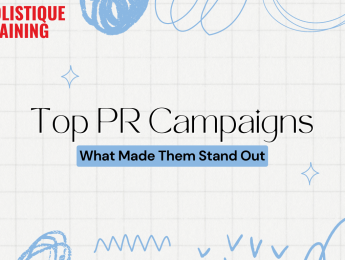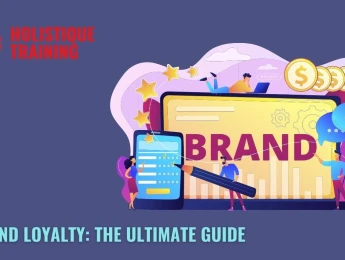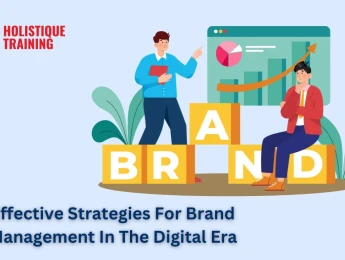- Table of Contents
- Introduction
- What is PCMM?
- The Basics:
- The Core Idea:
- Why Does It Matter?
- The Five Maturity Levels of PCMM
- Level 1: Initial, Unpredictable, and Ad Hoc
- Level 2: Managed - Workforce Practices Become Repeatable
- Level 3: Defined, Developing a People-Centric Culture
- Level 4: Predictable, Quantifying, and Optimizing Workforce Capability
- Level 5: Optimizing, Continuous Improvement, and Innovation
- In Summary
- Key Process Areas (KPAs) Across Maturity Levels
- Level 2: Managed – Establishing Discipline and Consistency
- Level 3: Defined – Building Competency and Capability
- Level 4: Predictable – Measuring and Managing Capability
- Level 5: Optimizing – Continuous Learning and Improvement
- Core Principles of PCMM
- 1. Workforce capability = Organizational capability
- 2. Processes are scalable, but people need development
- 3. Alignment between people and business goals is essential
- 4. Empowered employees are the drivers of innovation
- 5. Improvement should be continuous, not a one-time project
- 5. Benefits of Implementing PCMM
- 1. Improved employee retention and satisfaction
- 2. Stronger learning culture
- 3. Clearer alignment between roles and business needs
- 4. Better leadership at every level
- 5. Data-informed decision-making
- Strategies for Successful PCMM Implementation
- 1. Conduct a Comprehensive Workforce Capability Assessment
- 2. Establish Executive Alignment and Strategic Sponsorship
- 3. Develop Role-Based Competency Frameworks
- 4. Establish Scalable Learning and Development Ecosystems
- 5. Create Transparent Career Progression Pathways
- 6. Implement Feedback and Engagement Mechanisms
- 7. Utilize Workforce Analytics for Strategic Decision-Making
- 8. Embed PCMM Into Organizational Culture
- 9. Adopt an Iterative, Agile Implementation Approach
- 10. Leverage External Resources and Benchmarking Tools
- Measuring the Impact of PCMM
- Establish a Long-Term Vision for People Development
- Measure and Track Impact Using Workforce Metrics
- Foster a Culture of Talent Ownership
- Build Continuous Learning Into the Organization’s DNA
- Regularly Review and Adjust People Capability Initiatives
- Strengthen Organizational Agility
- Celebrate Successes and Recognize Contributions
- Conclusion
Introduction
We’ve all heard the phrase, “People are the heart of any organization.” But how often do businesses actually treat their people that way?
In the hustle of meeting quarterly targets, launching new products, and chasing growth, the human element can easily become an afterthought. Yet, any leader who has built something meaningful will tell you: a skilled, motivated, and well-supported team is what turns good ideas into great achievements.
So how do we ensure our organizations are not just technically sound but alsopeople-first? How do we create environments where individuals thrive, teams collaborate meaningfully, and organizations achieve sustainable excellence? This is where thePeople Capability Maturity Model (PCMM) comes in.
More than just another HR tool or corporate framework, PCMM is a human-centered roadmap designed to help organizations grow by growing their people. It brings structure to the often messy world of workforce development, helping leaders turn talent management into a strategic advantage, not just a checkbox.
Whether you're leading a small startup with a handful of employees or managing a multinational enterprise, understanding PCMM can shift how you build, support, and scale your people's practices. When done right, that can change everything, not just for your business but for the humans who power it.
What is PCMM?
Imagine a company where:
- Every employee knows exactly how they contribute to the bigger picture.
- Teams feel supported, not just managed.
- Learning and growth are not perks, but priorities.
- Workforce planning isn’t reactive, it’s strategic.
That’s the vision behind PCMM.
The Basics:
ThePeople Capability Maturity Model, or PCMM, is a framework developed by the Software Engineering Institute (SEI) at Carnegie Mellon University. Initially born out of the tech industry’s need to improve software processes, it quickly became clear that the model’s real strength was its universal application: improving the way organizations manage and develop theirpeople.
PCMM is built on the same principles as the widely usedCapability Maturity Model (CMM) , originally designed for improving software processes, but shifts the focus entirely to human capital. In essence, it helps organizations evolve their people practices from chaotic and inconsistent to proactive, strategic, and deeply aligned with business goals.
Where CMM addresses thetechnical backbone, PCMM addresses thehuman soul of an organization.
The Core Idea:
At its heart, PCMM is aboutcapability, not just what people know, but what they cando together within a supportive, structured environment.
It recognizes that high performance isn’t a lucky accident. It’s the result of:
- Clear systems for hiring, onboarding, and training
- Consistent feedback and performance development
- Thoughtful career paths and growth opportunities
- Cultures of trust, communication, and continuous improvement
Rather than offering quick fixes, PCMM provides amaturity roadmap, a step-by-step path to improve how an organization develops, supports, and leverages its people at every level.
Why Does It Matter?
In a world where technology changes rapidly and job roles evolve overnight, the organizations that win aren’t necessarily the ones with the fanciest tools; they’re the ones that canlearn, adapt, and grow faster than the competition. And that requires a workforce that is not only competent but confident, motivated, and deeply aligned with the mission.
PCMM gives organizations the blueprint to make that happen.
The Five Maturity Levels of PCMM
Implementing PCMM is not about instant transformation. It’s about structured, sustainable growth, much like personal development. The model breaks this journey intofive maturity levels, each building upon the foundation of the previous one.
These levels aren’t just theoretical; they reflect the common stages organizations move through as they evolve from reactive management styles to strategic people-centric systems.
Let’s explore each level in depth:
Level 1: Initial, Unpredictable, and Ad Hoc
At this stage, workforce practices areinconsistent, chaotic, and reactive. There might be a few talented managers or high-performing teams, but success often depends on individual heroics rather than organizational systems.
- Hiring practices vary widely.
- Employee performance isn’t systematically managed.
- Career development is mostly informal or absent.
- High employee turnover is common, often accepted as “part of the job.”
This level mirrors what many startups or early-stage organizations experience. Everyone is “doing their best,” but there’s little coordination or long-term planning.
Level 2: Managed - Workforce Practices Become Repeatable
The big shift in Level 2 isconsistency.
Organizations begin to formalize essential workforce processes:
- Structured hiring and onboarding procedures
- Job descriptions with clearly defined responsibilities
- Basic performance management and feedback systems
- Policies for work-life balance, attendance, and behavior
While these practices are still fairly basic, they are appliedconsistently across teams, reducing chaos and improving predictability.
Level 3: Defined, Developing a People-Centric Culture
Level 3 is thecultural tipping point. Organizations shift from merely managing people togrowing and developing them.
- Competency models are introduced, mapping out what skills, behaviors, and knowledge each role requires.
- Career development plans become personalized and integrated with organizational goals.
- Leadership development programs are launched.
- Performance is not only measured but improved through coaching and mentoring.
This level is a game-changer because it starts aligningindividual growth withorganizational performance.
Organizations at Level 3 begin to foster a culture wherelearning is encouraged, growth is supported, and leadership is cultivated from within.
Level 4: Predictable, Quantifying, and Optimizing Workforce Capability
If Level 3 is about building a people-first culture,Level 4 is about mastering it.
Here, organizations start to:
- Measure the return on people initiatives
- Useanalytics and forecasting to plan workforce development
- Integrateperformance metrics with business outcomes
- Optimize processes for hiring, retention, and leadership succession
This level bringsdata into the conversation, enabling organizations to fine-tune their people strategy with real-world evidence.
For instance:
- Which leadership development program results in the most successful internal promotions?
- What kind of onboarding produces the fastest ramp-up time?
- What characteristics are shared by your top-performing teams?
This is whereHR becomes strategic, a key driver of business growth, not just an administrative function.
Level 5: Optimizing, Continuous Improvement, and Innovation
Level 5 is where organizations becomelearning ecosystems.
- Workforce practices are continuously refined based on data and feedback.
- High-performing teams are studied and replicated.
- Innovation in people practices is encouraged at all levels.
- Employees are empowered to lead change and suggest improvements.
Rather than relying on top-down directives, organizations at this level areadaptive, self-improving, and deeply people-centric.
Table: Organizational Behaviors Across PCMM Maturity Levels
Behavior | Level 1: Initial | Level 2: Managed | Level 3: Defined | Level 4: Predictable | Level 5: Optimizing |
Response to Problems | Reactive and chaotic | Some consistency | Structured and proactive | Data-driven problem solving | Continuous improvement |
Employee Voice | Rare or ignored | Limited and procedural | Emerging and encouraged | Measured and supported | Fully empowered |
Leadership Development | Ad hoc | Based on need | Defined and planned | Tracked and optimized | Self-driven and embedded |
Culture of Innovation | Low | Minimal experimentation | Moderate and developing | Supported by data insights | High and organization-wide |
Talent Retention Strategy | Absent | Basic policies in place | In process and evolving | Optimized and measurable | Dynamic and people-led |
Workforce Planning | Nonexistent | Reactive hiring | Strategic alignment begins | Forecast-based and analytical | Integrated with business goals |
Training & Development | Informal and inconsistent | Job-focused training only | Competency-based learning | ROI-driven learning programs | Learning ecosystem |
Performance Management | Informal or absent | Basic reviews and metrics | Coaching and feedback loop | Linked to business outcomes | Real-time, adaptive feedback |
In Summary
The five levels of PCMM are not just bureaucratic milestones, they represent aphilosophical evolution:
- From managing people to enabling them.
- From reacting to problems to designing for growth.
- From scattered efforts to intentional systems.
No matter where your organization starts, the model offers aclear, compassionate path forward, one that puts people at the heart of long-term success.
Key Process Areas (KPAs) Across Maturity Levels
While maturity levels in PCMM describewhere an organization is in its journey,Key Process Areas (KPAs) describehow they operate within each stage. Think of KPAs as the practical building blocks, the systems, habits, and behaviors that help an organization move up the maturity ladder.
Each maturity level includes a specific set of KPAs that serve as focus areas for improvement. Let’s break them down, level by level.
Level 2: Managed – Establishing Discipline and Consistency
At this stage, the organization starts to move away from chaos and toward structure. The KPAs here focus oncreating foundational processes that apply consistently across teams.
Key Process Areas at Level 2:
- Staffing: Defined recruitment processes and job descriptions.
- Performance Management: Employees are evaluated against clear criteria.
- Work Environment: Policies for safety, inclusiveness, and communication.
- Compensation: Standardized and transparent pay structures.
- Training and Development: Introduction of job-relevant training programs.
Level 3: Defined – Building Competency and Capability
With a stable foundation, organizations at Level 3 begin todevelop people strategically. The KPAs now shift toward growth, alignment, and long-term planning.
Key Process Areas at Level 3:
- Competency Management: Roles are mapped to skills and behaviors.
- Career Development: Personalized career paths and internal mobility options.
- Participatory Culture: Employees are involved in decision-making.
- Workforce Planning: Strategic planning to match people's needs with business goals.
- Knowledge and Skills Analysis: Identifying and filling capability gaps across teams.
At Maturity Level 3, a key focus is on building and aligning workforce competencies. Tools and trainings likeCompetency & Value Development & Implementationprovide foundational knowledge in designing systems that nurture these competencies.
Level 4: Predictable – Measuring and Managing Capability
This stage introducesdata-driven workforce management. The focus here is on measuring how workforce capabilities affect business outcomes and using that information to guide decision-making.
Key Process Areas at Level 4:
- Mentoring: Formalized programs to pass on knowledge and skills.
- Organizational Capability Management: Tracking and forecasting overall skill levels.
- Performance Analysis: Linking people metrics to operational results.
- Competency Integration: Ensuring all processes align with desired capabilities.
Level 5: Optimizing – Continuous Learning and Improvement
At the final stage, organizations becomeagile learning systems. KPAs focus on innovation, feedback loops, and people-driven change.
Key Process Areas at Level 5:
- Continuous Capability Improvement: Regularly updating workforce strategies.
- Organizational Performance Alignment: Synchronizing people development with evolving business goals.
- Empowered Workforce: Employees take initiative to improve systems.
- Innovative Practices: Experimentation with new models of collaboration and learning.
Summary Table: KPAs Across Maturity Levels
Maturity Level | Key Focus | Examples of KPAs |
Level 2: Managed | Establishing Structure | Staffing, Performance Management, Compensation |
Level 3: Defined | Building Capability | Competency Management, Career Development, Workforce Planning |
Level 4: Predictable | Measuring Capability | Mentoring, Organizational Capability, Performance Analysis |
Level 5: Optimizing | Continuous Improvement | Empowered Workforce, Innovation, Continuous Learning |
If you want to explore the original source of these process areas in more detail, Carnegie Mellon University’s Software Engineering Institute published an extensivePeople Capability Maturity Model (PCMM) Guide that outlines them thoroughly.
Core Principles of PCMM
At its core, PCMM is not just a set of processes or technical steps, it's a belief system. It’s rooted in the idea that people aren’t just resources to be managed; they’re capabilities to be nurtured. Organizations that adopt PCMM are making a philosophical shift from control toempowerment, from reaction tointentional growth.
Here are the fundamental principles that drive the PCMM framework:
1. Workforce capability = Organizational capability
When your people grow, your business grows. PCMM is based on the simple but powerful idea that an organization is only as capable as its people. Building strong individual competencies across the board translates directly into stronger team performance, customer satisfaction, and innovation.
2. Processes are scalable, but people need development
Most organizations have a plan for scaling products or services. But what about scaling human capability? PCMM asserts that without structured development pathways for employees, growth will hit a ceiling because systems may scale, but people need support, mentorship, and structure to do the same.
3. Alignment between people and business goals is essential
It’s not enough for individuals to perform well in isolation. Their work needs to move the business forward. PCMM pushes for clarity: what skills do we need? Where are the gaps? How do we train, align, and promote in a way that supports long-term objectives?
4. Empowered employees are the drivers of innovation
PCMM challenges traditional top-down management structures. Instead, it promotes a culture where employees at all levels are encouraged to share ideas, solve problems, and initiate change. In other words, people don’t just follow the vision, they shape it.
5. Improvement should be continuous, not a one-time project
There’s no finish line. PCMM emphasizes that workforce maturity is an ongoing journey; organizations must adapt as technologies, roles, and markets evolve. Feedback loops, performance tracking, and learning systems are all part of the long-term DNA.
5. Benefits of Implementing PCMM
Let’s be honest, some leaders hear the “maturity model” and think it’s just another layer of corporate fluff. But the truth is, when PCMM is implemented well, it leads tomeasurable, human, and business-positive results.
Here are some of the most compelling benefits organizations report:
1. Improved employee retention and satisfaction
When people feel valued, understood, and developed, they stay. PCMM’s structured approach to career development, feedback, and empowerment helps reduce the uncertainty and burnout that drive people out the door.
One of the most valuable outcomes of PCMM is a healthier and more engaged workplace. Programs likeBuilding a Mentally Healthy Workplace Culturealign with PCMM principles by supporting emotional and psychological well-being.
2. Stronger learning culture
Instead of treating training as a one-off event, PCMM embeds learning into the fabric of the organization. Teams become learning hubs, mentoring each other, sharing knowledge, and improving together.
3. Clearer alignment between roles and business needs
Through competency mapping and planning, every role becomes purposeful. People understand how their work connects to broader goals, a key factor in motivation and morale.
4. Better leadership at every level
Leadership isn’t left to chance. PCMM organizations intentionally grow future leaders through coaching, performance feedback, and defined development pathways. As a result, leadership becomes sustainable, not reactive.
5. Data-informed decision-making
At the higher maturity levels, PCMM promotes the use of data and analytics to shape HR decisions. This includes tracking performance trends, assessing training effectiveness, and forecasting workforce needs.
Strategies for Successful PCMM Implementation
Transitioning to a People Capability Maturity Model (PCMM)-driven organization requires more than adopting new HR policies. It involves a strategic, organization-wide shift toward structured talent development, leadership accountability, and data-informed workforce planning. Below is a comprehensive roadmap to effectively implement PCMM at any maturity level.
1. Conduct a Comprehensive Workforce Capability Assessment
The starting point for any PCMM implementation is an honest, structured appraisal of current workforce practices. This diagnostic helps identify organizational gaps in areas such as competency mapping, team development, and workforce planning.
Key Actions:
- Engage external appraisers certified by the CMMI Institute.
- Use standardized PCMM maturity models to assess baseline status.
- Prioritize improvement areas based on strategic business objectives.
2. Establish Executive Alignment and Strategic Sponsorship
Effective implementation of PCMM hinges on executive buy-in. Senior leadership must treat workforce capability as a core driver of business value, not just an HR function.
Recommended Steps:
- Integrate PCMM goals into broader organizational strategy.
- Appoint a C-level sponsor to oversee cross-departmental alignment.
- Develop KPIs that link people's capability to business outcomes (e.g., retention, quality, delivery time).
3. Develop Role-Based Competency Frameworks
Competency models are essential in aligning workforce capabilities with business needs. These frameworks define the required skills, behaviors, and knowledge for each role, and serve as the foundation for hiring, evaluation, and development.
Implementation Guidelines:
- Involve subject-matter experts to ensure relevance and accuracy.
- Pilot with high-impact functions (e.g., engineering, sales, leadership).
- Revisit frameworks regularly to accommodate evolving business contexts.
4. Establish Scalable Learning and Development Ecosystems
PCMM emphasizes continuous, personalized development. Move beyond traditional training by investing in integrated learning platforms, mentorship, and on-the-job development.
Strategic Components:
- Learning Management Systems (LMS) with modular, role-specific paths.
- Career development centers and internal academies.
- Leadership development tracks with cross-functional exposure.
5. Create Transparent Career Progression Pathways
A hallmark of mature organizations is clarity around growth. PCMM promotes visibility of career paths, enabling employees to chart their development journey with confidence.
Best Practices:
- Publish role progression maps across departments.
- Embed career counseling in performance reviews.
- Provide self-assessment tools linked to competency models.
6. Implement Feedback and Engagement Mechanisms
Mature workforce systems are built on trust, transparency, and continuous feedback. Embedding structured feedback loops at all levels enhances employee experience and enables responsive leadership.
Tactics Include:
- Frequent one-on-one manager check-ins.
- Team performance retrospectives and 360-degree feedback.
- Real-time engagement surveys to monitor workplace climate.
7. Utilize Workforce Analytics for Strategic Decision-Making
Data becomes a critical asset at higher PCMM maturity levels. Use analytics to drive decisions about hiring, retention, training, and succession planning.
Action Points:
- Build dashboards that track development outcomes and productivity gains.
- Analyze attrition trends and training ROI.
- Use predictive models for workforce demand planning.
8. Embed PCMM Into Organizational Culture
Rather than approaching PCMM as a standalone framework, integrate its principles into the cultural DNA of the organization. This ensures sustainability and long-term impact.
Cultural Integration Strategies:
- Align recognition and rewards with competency-based growth.
- Encourage manager accountability for team development.
- Make internal communication part of the change management strategy.
9. Adopt an Iterative, Agile Implementation Approach
A common pitfall in capability maturity programs is the pursuit of perfection. PCMM works best when applied incrementally, allowing for continuous feedback and refinement.
Recommended Approach:
- Start with a small, strategic business unit.
- Celebrate quick wins and share success stories.
- Conduct regular retrospectives to identify improvement areas.
10. Leverage External Resources and Benchmarking Tools
Organizations don’t need to reinvent the wheel. The CMMI Institute and similar bodies offer resources, certifications, and global benchmarking that can accelerate your PCMM journey.
Implementing PCMM requires managing structured organizational change. Enrolling in courses such asHR Processes & Change Management can help HR teams develop the skills needed to guide institutions through this transformation.
Measuring the Impact of PCMM
Implementing the People Capability Maturity Model (PCMM) is just the beginning of a transformative journey for organizations. To truly leverage the benefits of PCMM, it’s essential to focus on sustaining its impact long after the initial implementation.
This requires continuous effort, strategic measurement, and an evolving commitment to workforce development. Leveraging the impact of PCMM effectively means embedding it within the organizational culture and using it to drive long-term success.
Here are some key strategies for ensuring that PCMM delivers lasting value:
Establish a Long-Term Vision for People Development
To fully leverage the impact of PCMM, organizations should integrate people capability into their long-term strategic vision. People development should not be a secondary concern but a primary driver of organizational success.
- Align workforce goals with business strategy.
- Promote a culture of continuous improvement.
- Regularly update competency frameworks to keep pace with industry changes.
Measure and Track Impact Using Workforce Metrics
It is crucial to track the impact of PCMM by measuring key workforce metrics. These include employee engagement, retention rates, leadership development, and skills gaps.
- Track engagement and satisfaction through surveys.
- Monitor talent retention and attrition.
- Use performance metrics to assess leadership development and skills progression.
Foster a Culture of Talent Ownership
Encourage employees to take ownership of their own career development. When employees understand how their development ties to both their personal goals and the organization’s success, they become more proactive in their growth.
- Provide resources and tools for self-assessment.
- Promote a growth mindset, where challenges are seen as opportunities for learning.
Build Continuous Learning Into the Organization’s DNA
PCMM can only succeed if learning becomes an ingrained part of the organizational culture. Continuous learning should not be limited to training programs but should be embedded into daily work.
- Implement microlearning and e-learning platforms for flexible access.
- Offer mentorship programs for knowledge transfer.
- Foster a knowledge-sharing culture through internal collaboration.
Regularly Review and Adjust People Capability Initiatives
To maintain the relevance of PCMM, organizations should regularly assess and adjust their people capability strategies. This ensures that competency frameworks and learning programs evolve with the business needs.
- Conduct annual maturity assessments.
- Solicit continuous feedback from employees and leadership on program effectiveness.
Strengthen Organizational Agility
One of the most significant benefits of PCMM is enhanced organizational agility. As employees develop across various competencies, they become more adaptable to changes in the marketplace.
- Encourage cross-functional collaboration to build diverse skill sets.
- Support innovation and experimentation within teams.
Celebrate Successes and Recognize Contributions
Recognition and celebration of milestones are key to sustaining momentum. Recognizing employees who embrace PCMM principles helps reinforce the importance of ongoing development.
- Implement recognition programs for those making notable contributions.
- Share success stories to motivate others and highlight the benefits of the PCMM framework.
Sustaining the benefits of PCMM requires active engagement from leadership at the highest levels.Senior Management Competency Development plays a vital role in equipping leaders with the skills and agility to guide organizations through transformation.
This course focuses on enhancing strategic thinking, decision-making, communication, and change management competencies.
Through executive education, mentorship, leadership workshops, and real-world exposure, senior leaders gain the tools to navigate complex business landscapes, drive sustainable growth, and build resilient, people-centered workplaces. Strengthening leadership capabilities not only benefits individual managers but also reinforces the organization’s overall competitiveness in today’s fast-paced environment.
Conclusion
In today’s ever-changing business environment, the organizations that thrive are those that invest in their people. The People Capability Maturity Model (PCMM) offers more than just a framework — it’s a mindset shift. It invites companies to align strategy with human potential, to grow talent with intention, and to create cultures where excellence isn’t the exception, but the standard.
Whether you're just beginning to explore workforce capability development or looking to refine existing practices, the journey toward maturity starts with people — and it starts with you.
To deepen your understanding of workforce capability, people strategy, and organizational transformation, take a look at ourspecialized courses designed to support professionals like you. Whether you're leading change or just getting started, we're here to help you make a meaningful, sustainable impact.
